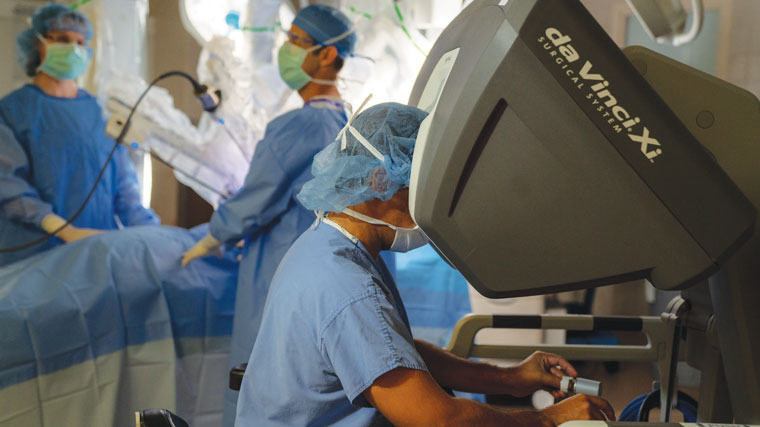Robotic Surgery Brings Ease To Complex Gynecology Procedures

Answer a few questions and we'll provide you with a list of primary care providers that best fit your needs.
The advent of robotic surgery has changed the face of gynecological procedures that once required extended hospital stays. Still its prevalence shouldn’t be seen as a green light for everyone who needs to enter the operating room.
Robotic surgery has developed rapidly for gynecologic conditions. A type of minimally invasive surgery, robotic surgery replaces the need for large incisions by using instruments that only require small holes and simulate the motion of a surgeon’s hands with the accuracy that comes from a machine.
“It allows us to do complex procedures that a lot of times would have required a major incision so patients now go home the same day versus up to four days, which was the norm with large-incision surgery,” said Keith Watson, MD. “It can cut down on the pain that comes from conventional surgery and can reduce the risk for postoperative infections, postoperative pulmonary emboli, and blood clots.”
Dr. Watson said robotic surgery is most commonly used to take care of ovarian cysts, endometriosis, hysterectomies and large fibroid uteri. It also has become the gold standard for malignant issues such as endometrial cancer.
“Robotic surgery is much more common now, but women need to know that there are times when a patient is not the ideal candidate for the procedure,” he said. “Women should feel the freedom to inquire about her physician’s experience with the procedure and the hospital in which it will be done.”
Things to Consider
Things to consider prior to robotic surgery:
- It’s not for everyone. Patients who have respiratory conditions such as chronic obstructive pulmonary disorder (COPD) or have cardiac issues are not always good candidates for robotic surgery. That’s because robotic surgery requires a patient be placed at a steep incline, causing the heart and lungs to work harder. Whether or not you have had previous abdominal surgery may also need to be considered.
- It’s tried and true. Robotic surgery, while sometimes seen as futuristic, has an impressive track record. Still, Dr. Watson encourages patients to inquire about the experience of their physician prior to agreeing to undergo it. Questions patients may want to ask their physician include: How many robotic surgeries have you done? Where did you receive your training? How long have you been doing the procedure? And how do you keep up-to-date on the latest information about this type of procedure?
- It’s an option worth exploring. Robotic surgery is fairly well-known, however, Dr. Watson said there are times when women either do not know it is available or have hesitation about doing it. The risks to robotic surgery are low compared to those of conventional surgery. Women should feel free to do their own research as well as ask plenty of questions about the procedure with their physician.
Answer a few questions and we'll provide you with a list of primary care providers that best fit your needs.
Source: Keith Watson, OB/Gyn of Greene County




